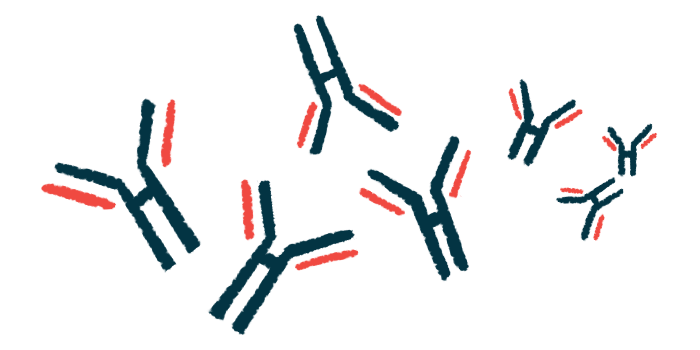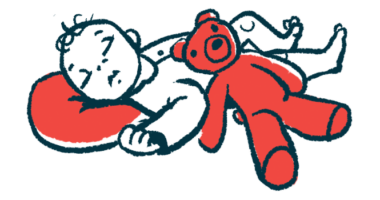Early bortezomib dosing found to better lower anti-ERT antibodies
Report tracks responses of 2 children with infantile-onset Pompe disease

Early treatment with at least two cycles of bortezomib may help lower the levels of antibodies that can make enzyme replacement therapy (ERT) less effective, according to a report of two young children with infantile-onset Pompe disease.
The cases add to earlier reports that bortezomib, an injectable medication available as Velcade and generics to treat certain cancers, may help tone down the body’s immune response to ERT and prevent a worsening of symptoms.
The report, “An updated management approach of Pompe disease patients with high-sustained anti-rhGAA IgG antibody titers: experience with bortezomib-based immunomodulation,” was published in Frontiers in Immunology.
Pompe disease is caused by a faulty or missing alpha-glucosidase (GAA), an enzyme that breaks down glycogen, a large sugar molecule, into smaller units. When there’s a shortage of functional GAA, glycogen builds up to toxic levels inside cells. In infantile-onset disease, symptoms usually appear in the first year of life.
ERT can provide a working version of GAA to replace the faulty one, but sometimes the body’s immune system produces high levels of antibodies against the lab-made enzyme. A high and sustained antibody titer (HSAT), as it’s called, can prevent ERT from working as well.
Bortezomib inhibits the proteasome, a complex that breaks down proteins when cells no longer need them. Blocking the proteasome results in cell death, including for B-cells, which produce antibodies.
2 children’s cases
Now, researchers in the U.S. described the cases of two children who developed HSAT despite receiving low-dose methotrexate, an immunosuppressant, alongside ERT. They were treated with bortezomib in an immune-tolerance induction (ITI) regimen including rituximab (also an immunosuppressant, known by its brand name Rituxan), methotrexate, and immunoglobulins (antibodies).
A girl, age 6, developed hypertrophic cardiomyopathy — a thickened heart muscle that cannot pump blood properly — two days after birth. She was diagnosed with Pompe disease about three months later. She was started on ERT, but developed anti-GAA antibodies within a month.
The presence of antibodies was linked to a halt in development, trouble swallowing, and signs that muscles, including those in the heart, could be damaged. A single cycle (four doses) of ITI with bortezomib lowered the antibodies by 64 times. As a result, during the third year of treatment, she “achieved age-appropriate major motor milestones,” the scientists wrote.
However, almost seven months later, the number of B-cells returned to normal and the production of antibodies increased. “An increase in the frequency of falls was noted,” the researchers wrote. This change led doctors to start a new course of bortezomib-based ITI.
After three cycles (12 doses) of bortezomib, the levels of antibodies dropped by 32 times. Despite aggravated trouble swallowing, speech delay, and an abnormal posture, the girl didn’t lose previously acquired gross motor skills.
The girl also received maintenance treatment with rituximab, methotrexate, and under-the-skin immunoglobulins to provide antibodies to fight off infection until the pool of B-cells was restored. She continued on her usual dose of ERT. Anti-rhGAA antibodies were undetectable at the last follow-up.
The other child, a boy age 2, was diagnosed with Pompe disease by newborn screening. As early as two weeks after birth, he had an enlarged heart, decreased muscle tone, and trouble feeding. ERT was started immediately alongside low-dose methotrexate.
However, four weeks into ERT, the boy developed HSAT. He received two cycles (eight doses) of bortezomib in addition to rituximab, methotrexate, and intravenous (into-the-vein) immunoglobulins. This resulted in no anti-GAA antibodies being detected in his blood.
Treatment helped to improve muscle function. The boy achieved developmental milestones gradually, transitioning from delayed motor skills at age 4 months to some age-appropriate abilities at 1 year old. He no longer needed support for feeding or breathing.
At age 2.5, the boy was still on ERT and continued to test negative for the presence of antibodies. According to the researchers, this boy’s case highlights the importance of swift action even when ERT is initiated shortly after birth, as HSAT can develop rapidly.
Both children experienced a reduction in antibodies, leading to clinical improvement. Neither child had major infections leading to treatment discontinuation or interruption. Bortezomib was safe and well tolerated, and both children continued on ERT.
The researchers suggest that patients with a sustained antibody titer equal to or greater than 12,800 may benefit from bortezomib. Treatment should be initiated with two cycles (eight doses) of bortezomib, with the option to prescribe additional cycles based on clinical response. They also recommend close monitoring and early intervention.







